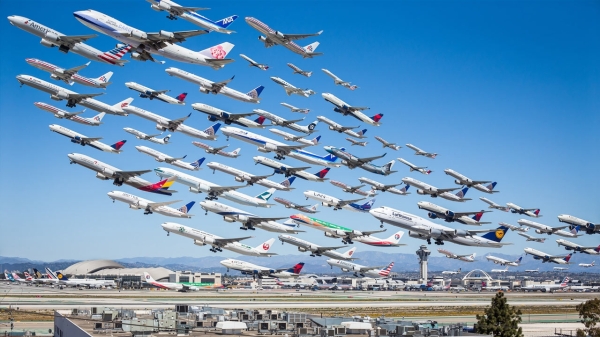Muscat: Most regions are expected to climb above 2019 levels in 2024, and most countries will experience continuous growth, according to the International Air Transport Association (IATA) in its recent annual report.
While connectivity to Asia Pacific should be fully restored this year, the The Middle East is forecast to have a more favorable economic environment in 2024, despite geopolitical tensions. Europe is expected to see solid growth in its passenger numbers, especially in smaller economies that have seen particular buoyancy recently.
Speaking to the Observer, Kamil Al Awadi, IATA’s Regional VP for Africa and the Middle East, the capacity for regional airlines increased 9.9 percent while the load factor increased by 3 percentage points.
Oman Air, the national airline of the Sultanate of Oman, said its ongoing transformation plan resulted in a 36-per cent reduction in net losses by the end of 2023 and a 30-per cent increase in revenue compared to that in 2022.
China and India are driving developments in this region.Over the next 20 years, we expect world passengers to increase by 3.8% per year on average, resulting in over 4 billion additional passenger journeys in 2043 compared to 2023. European and North American markets will see a slower rise
in demand, 2.3% and 2.7% per year respectively. Asia Pacific is anticipated to record the fastest rise in passenger numbers a00nd to contribute to more than half of the net increase in global passenger numbers by 2043.
Domestic travel bounced back to the pre-Covid level in the spring of 2023, while international routes did so only recently. Total traffic matched and surpassed 2019 numbers in February 2024.
The global network, however, has evolved since 2019. China’s international traffic recovery has been slower due to the later easing of travel restrictions, economic uncertainties, and geopolitical tensions.
The IATA baseline forecast comes with a large range of uncertainty that considers the upside and downside factors which could affect the industry’s trajectory and air passenger demand. Favorable macroeconomic conditions, such as the normalization of supply chains and lower inflation rates,
could potentially lead to an increase in demand.
Traffic numbers are not the only way to look at activity in the airline industry – connectivity adds a fundamental dimension to the analysis. Air transport plays a crucial role in global economic development, thanks to the connectivity it provides between people, cities, and countries. Connectivity ensures the seamless flow of goods, people, and ideas necessary to support the global business cycle.
2024 should be the first year since 2021 that real, that the inflation adjusted fares should fall, which could boost connectivity further.

